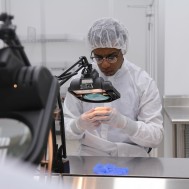In the medical industry, materials that are reliable and tough enough to handle critical environments are extremely sought after. Many medical manufacturers are turning to liquid silicone rubber (LSR) as the optimal material for medical-grade equipment. With its excellent heat-resistance, low-temperature flexibility, chemical resistance and more, LSR has proven to be the smart choice for many medical applications. Here are the major benefits that LSR is bringing to the medical industry:
Many reliable characteristics.
LSR is a low viscosity silicone elastomer intended for use in liquid injection molding (LIM) equipment. It offers many unique benefits that make it perfect for critical medical applications. Some of these benefits include:
- High thermal stability up to 400℉
- Flexibility at low temperatures down to -85℉
- High transparency
- Easily colored
- Self-lubricated
- USP Class VI and ISO 10993 grades
- Short term implant less than 29 days
- Long term implant over 29 days
For many medical applications, rubber devices are exposed to extreme temperatures, chemicals and environments that require durability and resistance to outside forces. With these useful benefits, LSR is becoming more and more desired by medical manufacturers.
Medical-grade properties.
LSR is capable of meeting FDA, ISO 10993 and Class VI medical compliant grades, making it the optimal material for the medical industry. LSR cures quickly and completely, which is crucial in medical devices that are inserted or come into direct contact with the human body. When rubber does not cure completely, it could leach chemicals, causing potential adverse reactions. For example, most industrial-grade silicones are cured with organic peroxides. If the silicone is not fully cured, un-vulcanized peroxide can bloom to the surface. Surfaced peroxide can lead to reactions in patients varying from minor skin irritation to life-threatening shock.
In order for a material to qualify as medical-grade, it must be able to handle sterilization processes, a variety of harsh environments and biocompatibility testing. Since many medical devices come into contact with human skin, it is crucial that materials are compatible with one another and do not react in any way. Typically medical grade silicones are processed in a cleanroom, which helps prevent any foreign material from contaminating the rubber and reduces bioburden, creating less intense sterilization processes for the part. LSR’s strong polymeric makeup allows it to pass the strict requirements of medical materials.
Manufacturing medical devices.
The LIM process occurs when LSR A and B parts are mixed together in a static mixer, transferred and mixed by the screw, and then injected into a mold. Product designers can mold LSR into a variety of shapes and sizes to fit their medical applications. Some of the most common uses of LSR in the medical industry include:
- General surgery
- Cardiology
- Oncology
- Plastic surgery
- Ophthalmology
- Orthopedics
- Neurosurgery
- Ear, nose and throat
LSR provides a high-quality material option for manufacturers looking to cater to these applications. While the upfront cost and time for LSR manufacturing may be higher than some other rubber materials, it can withstand greater challenges and perform better in the long run.
Today’s advanced medical procedures have placed rigorous new requirements on medical equipment and devices. When choosing a material for applications as critical as those in the medical industry, it’s important to take the time to ensure it can handle all of the challenging requirements the industry may throw at them. With all of the benefits of LSR, it’s easy to see why this material has made its staple in the medical world.
Want to talk more about LSR?
Tweet us @AppleRubber to continue the conversation.
